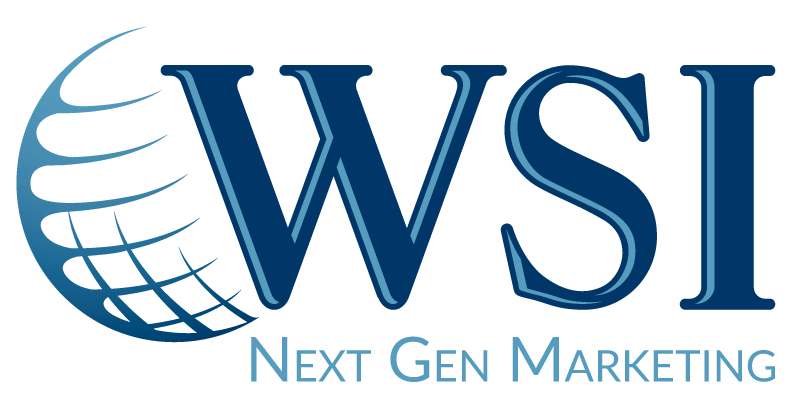10 Reasons Your New Website Will Fail
1. Your files are too big.
So you spent some serious time in perfecting that homepage video, you spent money on professional photos for each page, and now the website takes 9 seconds to load. What happened? While the website design and visual elements look killer, the user experience is nonexistent as no one will wait for your site to load. The problem is that those professional photos are actually 7 megabytes each. And that video? 54 megabytes. *Shiver*. Any file that you add to your website must be under 1 megabyte – including PDFs.
How can you do this? Resize your images to fit a computer screen. Our smartphones take photos that are 3000 pixels wide or more. Resize them to fit your site – fullwidth banner images should be 1920 pixels wide, while smaller photos (ie: within text) can be 800 pixels wide or less. After resizing them, compress them. Compressing can save you hundreds of kilobytes and will make the images load faster. You can resize and compress using photoshop or using free online tools like iloveimg.com or tinypng.com. Just upload your image and download the resized/compressed version.
For videos, the best advice we can give is to upload it first to vimeo or youtube and then embed it. If you’re trying to use your video for the homepage header, make sure it is only a few seconds long, resized to be less than 1920 pixels wide, and try compressing using video software or a free tool like videosmaller.com. Header videos are tricky and if you can’t get it under 2 megabytes, you may have to ditch it.
2. Your UX design is poor.
User experience is everything in making sure your potential customers convert. The website design can be stellar, the font is on brand, and the pixel width of button border may be just right – but the navigation is strange… users can’t find your hours… and the “buy now” button is grey.
There are some major no-no’s of UX design so make sure your developer is avoiding them. This includes making users jump hoops to sign up for a mailing list or book a service, making the checkout process too long, needing 7 clicks to make a reservation – the list goes on. Grey buttons mean sold out or not working. Contact and location info should be easy to find. Don’t build Norman Doors (any button, menu, or other digital object that isn’t self-explanatory in how to use it). To perfect UX design, step back. Put yourself in the consumer’s shoes, and peruse your website – is it easy to navigate and are you guided to right places?
3. You’re driving traffic away.
This can be as simple as modifying external links, to as complex as editing a third party booking system. Let’s start with the easy one. Any links that you have on the website which lead to an external website should 1) be minimized, and 2) open in a new window. PDF’s or other attachments (such as a menu) should always open in a new window. Same with social media pages and review sites.
If you have a third party booking system, you may also be driving traffic away with poor integration. Depending on your company, you may be able to create an integrated solution for bookings, reservations, and online stores that are perfectly in line with your website design. But sometimes, a perfectly integrated solution is just too complicated or too expensive. In that case, make sure that the system you are using is customized to match your website’s design (if possible). If integration into your site isn’t possible, make sure users can easily get back to your site after completing a booking.
4. You’re not ADA compliant.
That light grey text looks really soft against the crisp white background – but it is not ADA compliant. And those professional photos are stunning but there’s no ALT text which is an ADA violation. ADA compliance is a real thing but ADA compliance for websites is still fairly new – although, you may have heard of some wealthy companies getting in trouble for non-compliance.
If you’re building a new website, build for the future – ADA compliance will become a more active part of the digital world, so play it safe and follow their guidelines. Sometimes we must sacrifice our website design wants to ensure compliance. Readability must meet the requirements – the contrast between text color and background is within a ratio and the text size is not too small. Videos should have a transcription which can be read by a computer. Navigation and site functions should be built in a way that is operable by keyboard-only. Error messages should have clear explanations and understandable directions for fixing. The website should be compatible with leading screen readers.
5. You have poor hosting.
How does that phrase go again? The chain is only as strong as its weakest link, you’re only as good as your team, and a website is only as fast as its hosting provider – something like that. You can do a lot to make sure your website runs fast – optimize photos, clean up your css and javascript, and add a caching plugin. But in the end, if your hosting provider is cheap and using an old server, your website will be slow and it will have some downtime.
Invest in a reliable hosting company that uses CDN (for fast loading time), runs backups, offers great support, and maximizes performance. Spend the extra few dollars per month to give your consumers a great web experience.
6. Your site isn’t optimized for search.
You may have nailed the website design but search engines will never show your website because it’s not optimized correctly. This includes have a sufficient amount of text on each page, defining your headers with keywords, creating meta titles and descriptions with keywords, and adding keyword descriptions to your images. Creating blogs monthly also helps bump up your site on rankings.
Understand that each page is ranked individually by search engines (like Google). That means an inner page on your website can rank well if optimized properly. The most common issue we see is people wanting a very specific website design on their homepage – beautiful images and video but barely any text. Search engines won’t like it and users will not find it.
7. You don’t have a conversion strategy.
Conversion optimization is the goal of a website. Traffic is great but if they don’t convert, it’s useless. Great website design should follow a conversion strategy. Do you have a conversion goal? A goal can be purchases made, reservations or bookings completed, contact forms submitted, mailing list sign ups, lead generation form fills, or a simple phone call. Is your website guiding users to complete this goal?
We discussed earlier UX design. This goes hand-in-hand with conversion optimization. The user experience should put people on the path to conversion. You then need to optimize all conversion points on the website. Test your own contact forms and mailing list forms – are they easy to find and simple to fill out? If you sell a product or service online, do a test purchase. Was it quick and painless to complete the purchase? How many clicks did it take? How many fields did you have to fill out? Is billing info required by your payment processor? Is it easy to find the cart and checkout? If your goal is a phone call, make sure the number is clickable and on every page.
8. You didn’t implement 301 redirects.
If you are redesigning an existing website, you need to make sure that redirect any old pages to new ones. Perhaps you got rid of a service or product or you wanted to delete inaccurate blogs, you must redirect those URLs to the new website. Perhaps you wanted to change the URL of a certain page – that must be redirected.
If you don’t implement these redirects, 404 errors of the old URLs will occur and search engines will lower your rankings – 404 errors mean a bad user experience and Google factors in user experience for rankings. But beware – if your pages have high authority on Google (have been indexed for a long time), think twice about changing them as Google will have to re-learn your new URLs.
9. You changed existing indexed content too much.
If your website has been on Google for a long time and has accumulated a lot of traffic, chances are you have good domain authority and Google has learned your content very well. If you launch a new website and change your content drastically, Google will get a little confused. You may see a dip in traffic as search engines have to re-index all your pages. We recommend being mindful when making drastic content changes (if it ain’t broke, don’t fix it mindset). If your old website had very low traffic and wasn’t too successful, it’s safe to make those drastic changes (it was broken so it’s ok to fix).
10. You didn’t uncheck THE checkbox.
Oh boy. You launched your amazing website, spent thousands of dollars and hundreds of hours and it’s been a month. And yet, search engines still haven’t crawled your site. What is happening? You dive into the backend and see the checkbox is still checked! In WordPress there is a checkbox in settings that reads “discourage search engines from indexing this site.” This means search engines won’t crawl your site and won’t remember it – this is only useful during development. When you launch your website make sure to UNCHECK this box! Other web builders and CMS platforms may have a similar settings so ensure you allow indexing when launching.
Get In Touch
Please select a valid form

